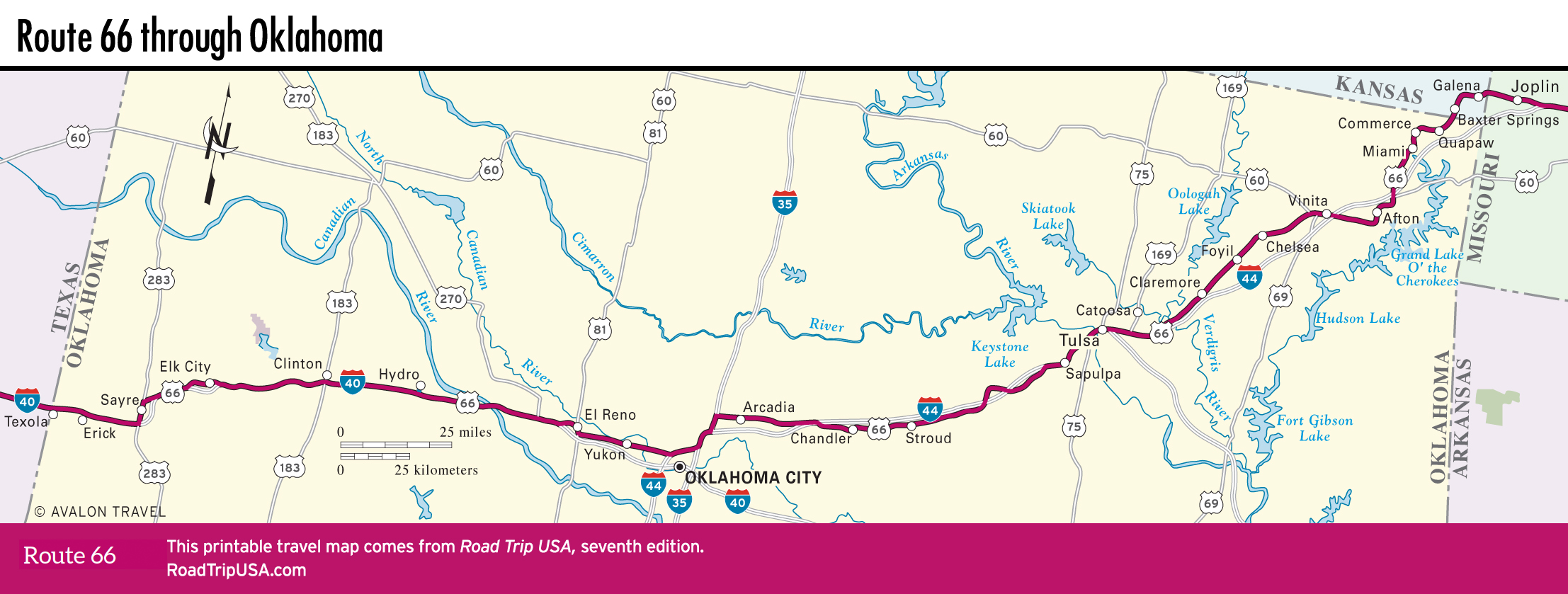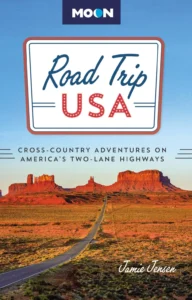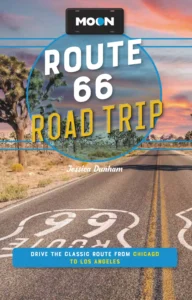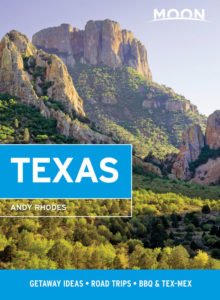Oklahoma City
Long one of the primary stops along the Mother Road, Oklahoma City (pop. 649,021) is the only place along the route singled out for praise in the Bobby Troup song (“Oklahoma City is mighty pretty”), no doubt thanks to the easy rhyme. Its wealth of “City Beautiful” era avenues and neighborhoods makes it not only mighty pretty but enjoyable. The city was the biggest boomtown of the 1889 Land Rush, when Oklahoma was opened for white settlement after being set aside “for eternity” as Indian Territory. Between noon and sundown on April 22, some 50,000 people raced here to claim the new lands—many of them having illegally camped out beforehand, earning the nickname “Sooner,” which is still applied to the state’s college football team.
A second boom took place during the Great Depression years, when oil was struck. There are still producing wells in the center of the city, including some on the grounds of the state capitol. The collapse of the oil industry in the 1980s hit hard, then the shock of the 1995 antigovernment terrorist bombing carried out by Timothy McVeigh in 1995 hit even harder. The city has since revitalized itself, with a gorgeous new baseball stadium, an exciting NBA basketball team, a concert arena, and canal-side cafés, all collected in the compact walkable “Bricktown” warehouse district.
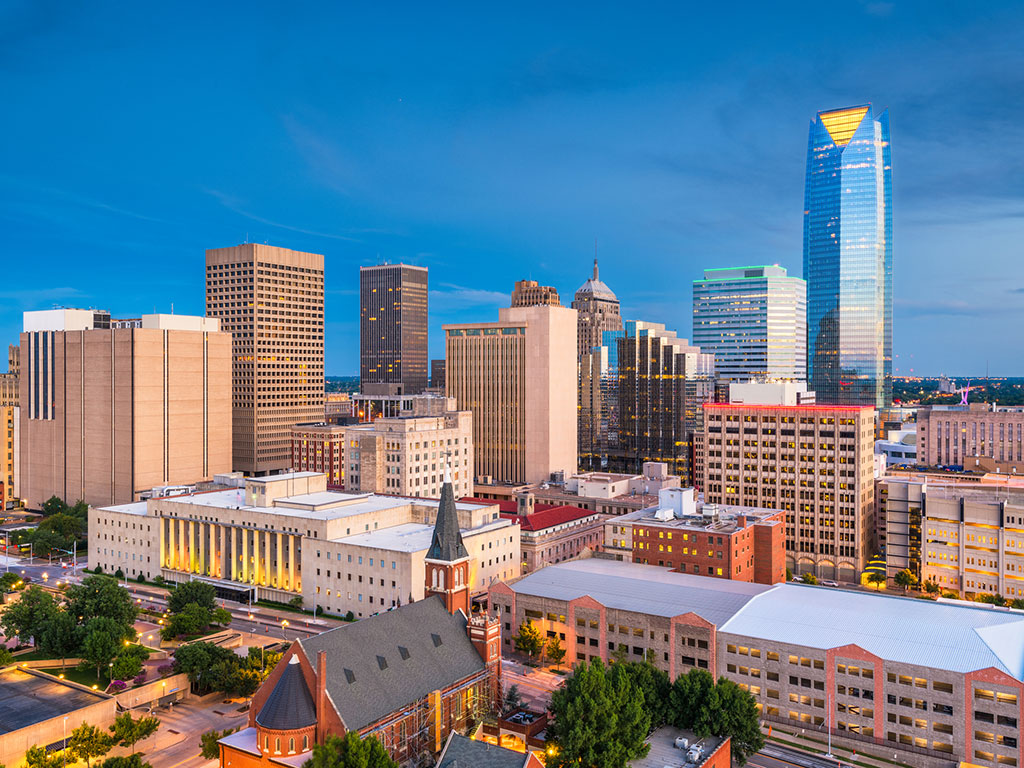
Just off old Route 66 across from the capitol, a good first stop is the Oklahoma History Center (800 Nazih Zuhdi Dr., 405/522 0765, Mon.-Sat., $7), which has exhibits tracing the state’s growth, with special collections on the Native American presence and on pioneers. There’s also a wide-ranging oral history of the Mother Road.
For poignant balance to a nostalgic Route 66 tour, pay your respects to the 168 men, women, and children killed in the April 19, 1995, bombing of the Alfred P. Murrah Federal Building. Between the capitol and Bricktown, the site of the bombing has been preserved as Oklahoma City National Memorial (620 N. Harvey Ave., 24 hours daily, free), landscaped with a shallow pool around which are arrayed a series of 168 sculpted chairs. Each chair represents a person killed in the blast, and the chairs range from small to full-size, marking the varying ages of the dead (who included 19 kids from the building’s daycare center). An adjacent museum (405/609-8859, daily, $15) tells the story of the bombing, its perpetrators, and its victims.
Where to Eat and Stay in Oklahoma City
The downtown Bricktown district is home to a lively concentration of restaurants and bars, many lined up along the attractively landscaped Bricktown Canal. Oklahoma City also has more barbecue stands and steakhouses than just about anywhere in the country. On the old Route 66 landmark alignment northwest of downtown, head to Jack’s Bar- B-Q (4418 NW 39th St., 405/605-7790), a traditional cafeteria-style barbecue joint with good brisket sandwiches, best washed down with a cold drink next door at the Hideaway Club sports bar. Other good OKC barbecue bets include the bigger and more accessible Iron Star Urban BBQ (3700 N. Shartel Ave., 405/524-5925), just off 36th Street; or Earl’s Rib Palace (216 Johnny Bench Dr., 405/272-9898), with six locations, including one right on the Bricktown Canal. For great non-barbecue food right on old Route 66, go to the popular Ann’s Chicken Fry House (4106 NW 39th St., 405/943-8915)—look for the classic Caddies and fake police cars in the parking lot.
Lodging options in and around OKC are provided by the usual motel chains, plus a nice Hampton Inn (300 E. Sheridan Ave., 405/232-3600, $119 and up) in Bricktown.
Travel Map of Oklahoma
